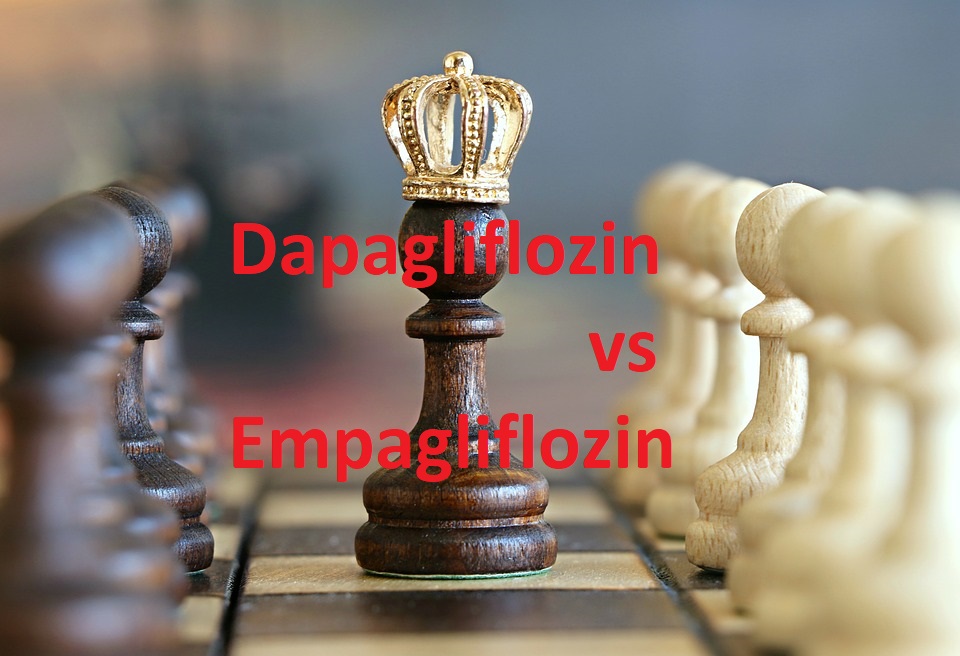Dapagliflozin and empagliflozin are the two SGLT2 inhibitors currently available in Pakistan.
Worldwide, among the SGLT2 class of medicines, apart from dapagliflozin and empagliflozin, canagliflozin is also being used to treat type 2 diabetes patients.
Which patients should be prescribed SGLT2 inhibitors?
SGLT2 inhibitors can be used as monotherapy or in combination with metformin, insulin or the gliptins (DPP IV inhibitors like sitagliptin, vildagliptin, and linagliptin) for the treatment of type 2 diabetes patients.
Which SGLT2 inhibitor is better?
As a class effect, both dapagliflozin and empagliflozin reduce the glycated hemoglobin.
Furthermore, both these drugs may cause volume depletion and reduce blood pressure via the process of osmotic diuresis.
In addition, both the drugs can increase the risk of genital infections, urinary tract infections and increase the risk of diabetic ketoacidosis.
However, the two major trials evaluating the cardiovascular safety outcomes demonstrate a slight edge of empagliflozin.
The Declare-TIMI 58 trial – Dapagliflozin and cardiovascular outcomes in type 2 diabetes patients:
This study was conducted to evaluate the safety of dapagliflozin in type 2 diabetic patients who had or were at risk of atherosclerotic cardiovascular diseases.
The primary safety outcome was a composite of major cardiovascular events (MACE) defined as cardiovascular death, myocardial infarction, or ischemic stroke.
Among the 17160 patients including 10186 patient without the atherosclerotic disease who were followed for a median of 4.2 years.
Dapagliflozin did not result in a lower or a higher rate of MACE but resulted in a lower rate of hospitalization and cardiovascular deaths.
Genital infections and the incidence of diabetic ketoacidosis was higher in the dapagliflozin group.
Dapagliflozin did not result in either increase or a decreasing rate of amputation.
The glycated hemoglobin dropped by 0.42% in the dapagliflozin group.
The EMPA-REG outcome trial – Empagliflozin, cardiovascular outcomes, and mortality in type 2 diabetes patients:
This study was conducted to evaluate the safety of empagliflozin in type 2 diabetes patients.
Among the 7020 patients, 4687 were given empagliflozin while the rest were on a placebo medicine.
The primary safety outcome was a composite of Major cardiovascular events defined as deaths from cardiovascular causes, nonfatal myocardial infarction or nonfatal stroke.
The primary outcome occurred in a significantly lower number of patients in the empagliflozin group than the placebo.
Empagliflozin was not only found to be inferior to placebo but was found to be superior in preventing major cardiovascular events.
It was found to be superior in preventing deaths from cardiovascular causes, deaths from any cause and resulted in lowering the rates of hospitalization due to heart failure.
It is important to note that the cardiovascular benefits of empagliflozin were seen at three months of the study drug. This emphasizes that the cardiovascular benefits were not secondary to a good glycemic control or its effects on atherosclerosis.
The proposed mechanism is the shift of cardiac metabolism from glucose to fats making it more energy efficient.
Reduction in glycated hemoglobin was 0.54% and 0.6% in the 10 mg and 25 mg respectively.
Genital infections were common in the empagliflozin group.
However, hypoglycemic adverse events, acute renal failure, diabetic ketoacidosis, thromboembolic events, bone fracture, and volume depletion was similar in both groups.
In conclusion …
Major clinical trials conducted so far emphasize that both the SGLT2 inhibitors are non-inferior to placebo as far as the major cardiovascular events are considered and superior in reducing the glycated hemoglobin.
However, empagliflozin has been shown to reduce all major cardiovascular events including cardiovascular deaths and heart failure and is hence superior to placebo.
Book appointment for diabetes and hypertension here

